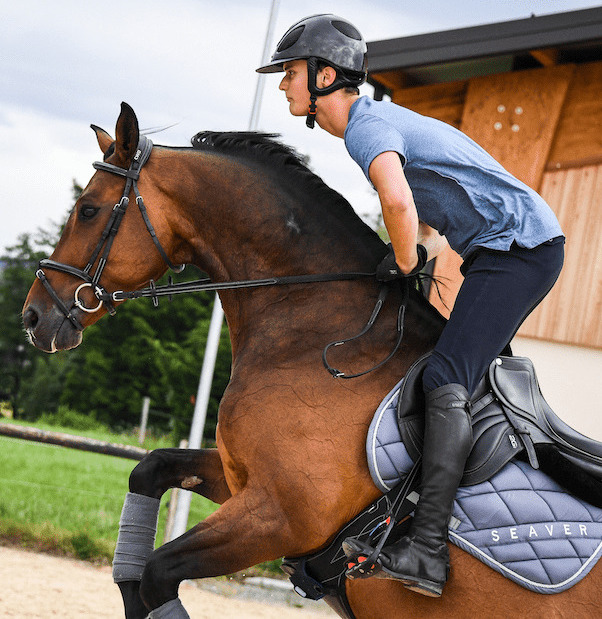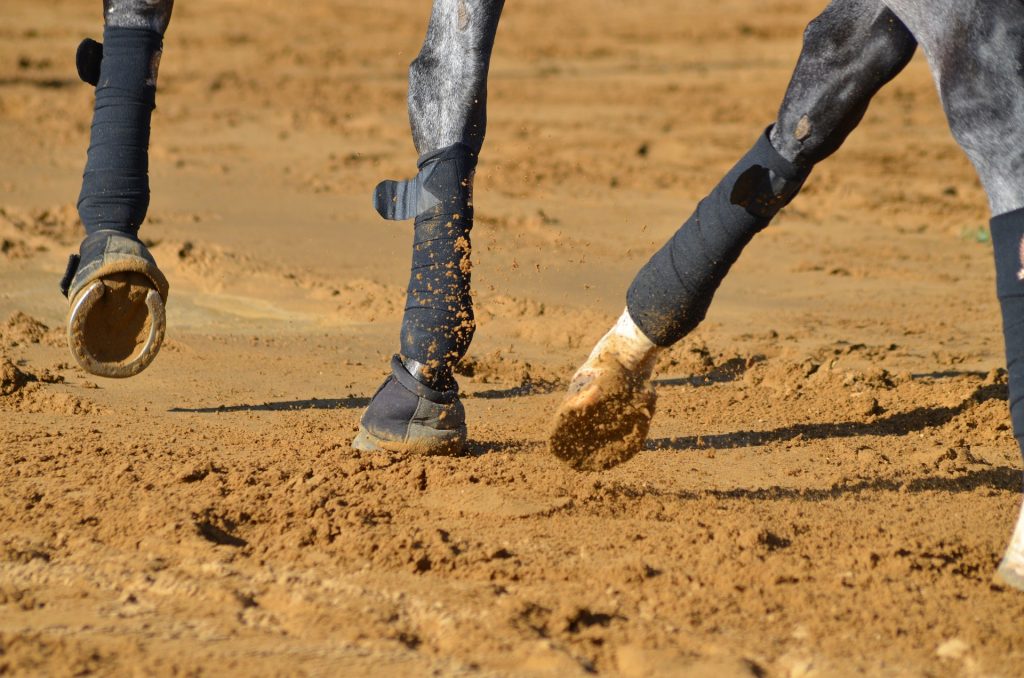-15 % sur votre première commande
rentrez votre email pour recevoir le code


Le paiement x10 disponible sur la boutique ! Commandez votre airbag SAFEFIT pour 50€/mois
lundi, 24 avril, 2017
The horse is the animal the most exposed to lameness. Particularly feared, owners and riders are usually not able to detect it early enough.
Because it can quickly harm horses’ quality of life and impair their performance, Seaver has developed a tool to aid lameness detection.

Let’s start with some definitions.
Lameness is not a disease but an anomaly in the horse’s posture and movement caused by discomfort or pain usually in a limb. Lameness will impair the horse’s ability to move normally. When a horse goes lame, say because of pain in the left frontlimb, all his weight will shift to the right frontlimb to relieve him, which will cause a locomotion asymmetry.
There are several reasons for lameness in the horse. It can happen following a shock, resulting in swelling. In this case, the lameness is benign and should disappear after a few days. Another cause is a small stone stuck in the horn of a hoof, making it painful for the horse to bear weight on it: a veterinary or farrier intervention will be necessary in this situation. Pain in a limb can also lead to lameness. It can be pathological, such as osteoarthritis or navicular disease for instance, or result from a strain or tendinitis. Appropriate treatment will be needed to ensure the horse’s good recovery. Lameness can also be caused by pain in the kneecap, stifle or shoulders among others.

In general, if the lameness is due to a skeletal, joint or foot injury, it will be more pronounced on ‘harder’ ground. Conversely, if it is due to a muscular or tendinous lesion, it will be more pronounced on ‘softer’ ground. Either way, it is essential to identify the area and causes of the pain to properly treat and cure the lameness.
As mentioned above, when a horse goes lame, he tends to carry less weight on the affected limb to reduce the pain. Seaver measures the weight distribution per leg, which will allow you to detect a problem early on. In order to do this, our tool compares the movements (up and down, left and right) of the horse’s chest during the placement of each limb on the ground.
By definition, a sound horse moving on a flat surface in a straight line should have symmetrical movements. The left and right forelimbs, just like the hindlimbs, should bear the same weight. Obviously, this rule only applies to symmetrical gaits; i.e. the walk and trot.
A threshold of about 25% of movement asymmetry is suggested to detect an issue. Therefore, if a horse is putting 25% less weight on one limb compared to the corresponding other, it is indication of a problem. However, it is important to note that movement asymmetry is not necessarily indicative of a lameness. Other factors have to be taken into account; the rider might have a wrong position, the saddle might be ill fitted or not adapted to the horse for instance. If in doubt, it is best to ask for veterinary advice.
For more information on movement symmetry, go take a look at the article we wrote in association with Camille Judet Cheret, professional dressage rider: here
An abnormal increase in heart rate for the same intensity of training can also be a revealing sign of lameness. Thanks to the electrodes placed inside the girth, Seaver can record the heart rate of your horse in real time. Thus, it allows you to quickly spot an anomaly and anticipate lameness.
If you are not certain; do not worry, we have thought of everything. The Seaver girth is equipped with an alert system, and can send you notifications on your mobile app to warn you of a potential lameness.
Lameness can also be confirmed visually; by observing the horse move on a flat surface in a straight line, from the front and the back, at the walk and the trot.
In case of a frontlimb lameness, the head and neck of the horse will tend to suddenly rise when the sore limb hits the ground.

In case of a hindlimb lameness, it is somewhat different: the hip will tend to rise when the painful limb is weight-bearing.
The Seaver team